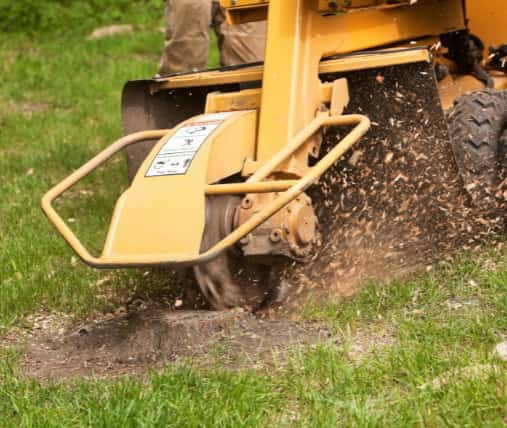A well-maintained hedge doesn’t just frame your property beautifully — it also provides privacy, structure, and protection from wind and noise. However, to achieve that lush, dense appearance that makes a hedge truly stand out, it must be pruned correctly and at the right time. Poor trimming can leave gaps, weaken the structure, or slow down growth altogether. Bury St Edmunds Tree Surgeons offers expert hedge cutting and maintenance services throughout Bury St Edmunds, Suffolk, ensuring that every hedge receives the precision care needed to thrive and thicken naturally.
Why Proper Hedge Cutting Matters
Many homeowners assume that trimming is simply about keeping a hedge neat and tidy, but there’s far more science behind it. Each cut made during trimming or pruning affects how the plant redistributes energy and how new shoots develop. When done properly, cutting encourages multiple stems to grow from a single point, leading to a fuller, more compact hedge.
Incorrect cuts, on the other hand, can cause dieback, weaken the structure, and allow gaps to form. That’s why correct technique, timing, and an understanding of the hedge species are essential.
Understanding How Hedges Grow
Hedges are typically made up of shrubs or trees that produce new growth from buds located along their stems. When you cut back the top or sides, you remove apical dominance — the natural process where the topmost shoot controls the direction of growth.
By removing this dominance through trimming, the hedge redirects its growth hormones to lower and side buds, causing them to sprout and fill out. This biological response is what helps hedges thicken from within, rather than just growing upwards or outwards.
At Bury St Edmunds Tree Surgeons, understanding the biology of each hedge type allows for careful, targeted cuts that promote healthy regrowth throughout the structure.
The Right Time to Trim for Density
Timing is critical to encouraging healthy, dense hedge growth.
For deciduous hedges:
- Early spring and mid-summer are ideal times. After the first flush of growth, trimming encourages secondary shoots to emerge, creating a denser structure before autumn.
- Avoid heavy cutting late in the season, as new growth may not harden before frost arrives.
For evergreen hedges:
- Late spring or early summer is best. These plants grow more slowly, so one well-timed trim per year can be enough to maintain a compact, thick form.
- Light maintenance trimming can be done later in the year to keep the hedge tidy.
Professional timing and technique ensure maximum density without compromising plant health — something Bury St Edmunds Tree Surgeons applies to every hedge they maintain across Bury St Edmunds, Suffolk.
How Correct Cutting Technique Encourages Growth
A good hedge cut is about precision rather than removing large amounts of foliage. The goal is to stimulate new shoots evenly throughout the plant.
Key cutting techniques include:
- Tapering the shape – The hedge should be slightly wider at the base than at the top. This ensures sunlight reaches all areas, preventing sparse lower growth.
- Avoiding deep cuts into old wood – Most hedge species won’t regrow from old wood, so trimming should focus on new or semi-mature shoots.
- Using sharp, clean tools – Blunt blades tear stems, which can cause disease or slow recovery.
- Cutting back to a bud or lateral shoot – Encourages controlled, directed regrowth rather than random sprouting.
When carried out correctly, trimming enhances both the strength and visual appeal of your hedge, helping it stay compact and vibrant.
Species-Specific Considerations
Different hedge species respond differently to pruning. Some varieties, like privet and hawthorn, react well to frequent trimming, producing dense new growth quickly. Others, such as yew and laurel, prefer less frequent but more strategic cutting.
- Privet: Rapid regrowth; can be trimmed multiple times per year to build density.
- Beech and hornbeam: Maintain their leaves in winter and respond best to early-season shaping.
- Laurel: Produces large leaves that need careful hand trimming to avoid unsightly cuts.
- Yew: Slow-growing but responds extremely well to shaping, creating formal, long-lasting hedges.
Bury St Edmunds Tree Surgeons has extensive experience managing different species across Bury St Edmunds, Suffolk, tailoring trimming methods to suit the growth characteristics of each type.
Encouraging Regrowth After Trimming
After trimming, hedges benefit from good aftercare to support new growth. Healthy regrowth depends on the plant’s ability to recover quickly and produce new shoots.
Best practices for post-trim care:
- Water during dry periods: Keeps roots hydrated and supports shoot development.
- Mulch around the base: Helps retain moisture and suppress weeds.
- Feed lightly with natural compost: Encourages strong regrowth without forcing excessive soft shoots.
- Avoid over-trimming: Removing too much foliage limits photosynthesis, slowing recovery and thickening.
These simple but important steps, combined with professional trimming from Bury St Edmunds Tree Surgeons, ensure the hedge thickens naturally and maintains its structure throughout the year.
Benefits of a Well-Thickened Hedge
A dense, well-maintained hedge provides more than just visual appeal.
Key advantages include:
- Privacy and screening: Thick foliage forms a natural barrier between properties.
- Wind and noise reduction: Dense growth absorbs sound and slows air movement.
- Wildlife support: Birds and small animals use dense hedges for nesting and shelter.
- Increased longevity: Healthier, thicker hedges resist disease and environmental stress better.
A properly maintained hedge enhances your garden’s overall health and beauty while increasing your property’s kerb appeal.
Why Professional Hedge Cutting Makes a Difference
While trimming may seem straightforward, achieving balanced, even growth requires experience and precision. Overcutting or incorrect shaping can take years to correct.
Bury St Edmunds Tree Surgeons provides professional hedge care services across Bury St Edmunds, Suffolk, ensuring that every hedge is cut using the right methods and timing for optimal results. Whether rejuvenating a neglected hedge or maintaining a formal boundary, their expert approach encourages consistent thickness, vitality, and long-term health.
Conclusion
Thick, vibrant hedges don’t happen by chance — they’re the result of correct pruning, expert timing, and consistent care. Every cut influences the plant’s ability to grow denser and stronger, making precision essential.
Bury St Edmunds Tree Surgeons helps homeowners across Bury St Edmunds, Suffolk, achieve healthy, full-bodied hedges that provide lasting beauty and function. With proper cutting techniques and professional attention, any hedge can thrive, offering a lush, natural boundary that enhances your garden year after year.
Call us on: 01284 339 498
Click here to find out more about Bury St Edmunds Tree Surgeons
Click here to complete our contact form and see how we can help with your tree needs.

